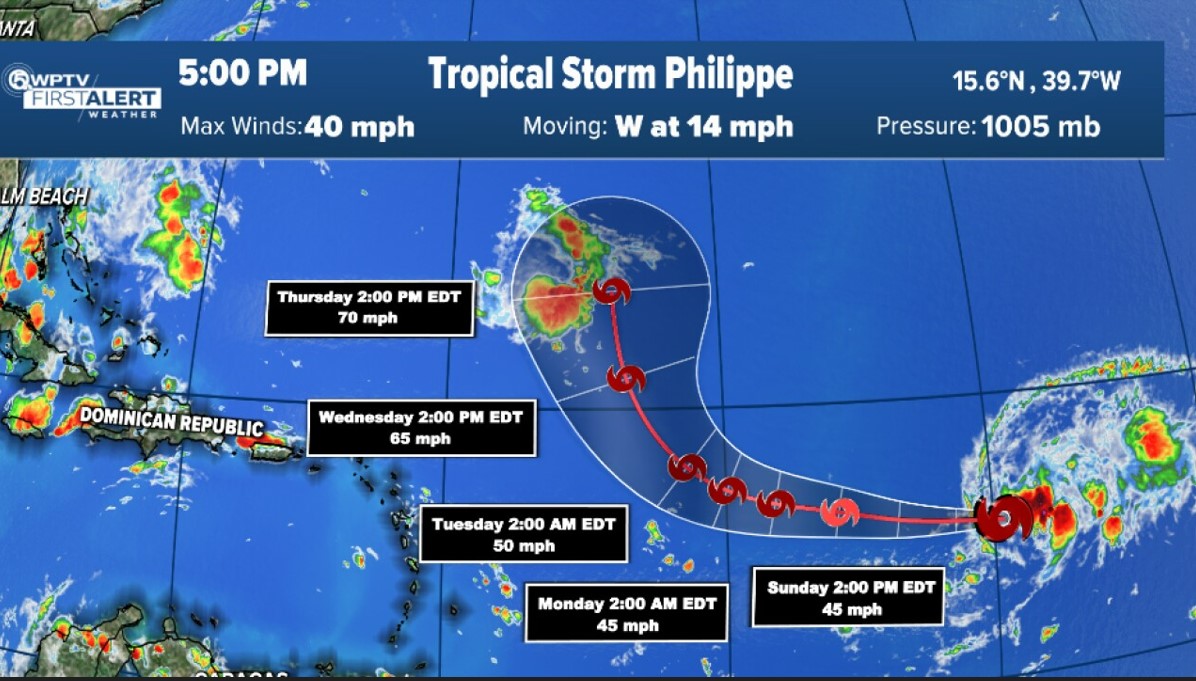Hurricane experts monitored Tropical Storm Philippe and one other Atlantic system Tuesday as Tropical Storm Ophelia disappeared.

Possible path of tropical storm Philippe (Source: USA Today)
A Tropical Storm Philippe May Diminish and Evaporate
Philippe and other systems were not expected to threaten the U.S. or other land areas, according to the National Hurricane Centre. The Atlantic storm season is peaking. The season runs from June 1 to Nov. 30, peaking in mid-August–mid-October. Colorado State University hurricane researcher Phil Klotzbach says 2023 has tied 2005 for the third-most Atlantic named storms through Sept. 23, after 2020 (23 named storms) and 2021 (18 named storms).
A Tropical Storm Tuesday saw Philippe, the 17th named storm of the Atlantic hurricane season, spinning weakly. The hurricane centre reported that Philippe was “struggling” because to high wind shear. “Philippe remains a strongly sheared and poorly organized tropical storm,” the hurricane centre reported at 5 p.m. The hurricane centre said shear and dry air should “cause gradual weakening,” and Philippe should fade in four days. AccuWeather says Phillipe may “skirt the islands of the northern Caribbean later this week with drenching showers and locally gusty thunderstorms on its southern fringe.”
The hurricane centre reported Philippe’s centre 780 miles east of the Northern Leeward Islands around 5 p.m. Tuesday. The storm had 45 mph winds and was moving west at 13 mph. Another system far out in the Atlantic Ocean is being tracked by hurricane centre forecasters. That tropical wave, much farther from the U.S. than Philippe, is strengthening and expected to become a tropical depression in the following few days. When it becomes a depression or named storm, AccuWeather predicted this tropical wave would likely turn north. The 2023 tropical storm list will include Rina if it becomes named.
READ ALSO: Tornadoes at East Coast are Expected Brought by Tropical Storm Ophelia

















































